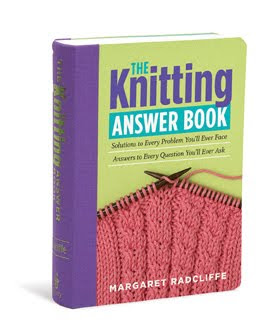"You're a knitting savant!" she cried, and I thought she was being either wonderfully kind or completely condescending (she was that kind of friend), but then I took a look at what I had done, and I really liked it. There were orderly rows of even stitches, perfectly in pattern and, shockingly, the right size. I realized that when I had really gotten the flow, the pacing, the muscle memory of performing the motion without having to think about what I was doing, I felt at peace. It was a sensation so alien that I didn't know at first what it was, and I thought I was catching a cold or just very tired.
But the more I knit, the more I relaxed, and even when I was puzzling out a complicated stitch series or a challenging pattern construction, it wasn't irritating or frustrating; it was . . . fun. Fun! I'm not the kind of gal who can easily parse something new without a little help, and after I got over the first couple of projects, I went out to my local yarn store and bought myself a good friend:

This book has helped me more than I can say. Pattern calls for a decrease I've never heard of? Page 267. Cables? Page 201. How do I sew this thing together? Finishing, chapter 12. I carry it in my knitting bag wherever I go, and I have become mildly annoying at any fiber gathering or Knit Night for shoving it into people's hands when they ask about a technique or pose a gauge query. The first time I met author Margaret Radcliffe, I gushed a bit. She was very patient, and when I came to work at Storey, long after this, I reminded her of the meeting and apologized for gushing. She accepted graciously, proving again that knitting brings peace.
— Amy Greeman, Publicity Director
2 comments:
This reference sits in my knitting bag as well. Very, very useful, especially in the middle of the night when my knitting buds are offline.
One of my favorite knitting reference books.
Post a Comment